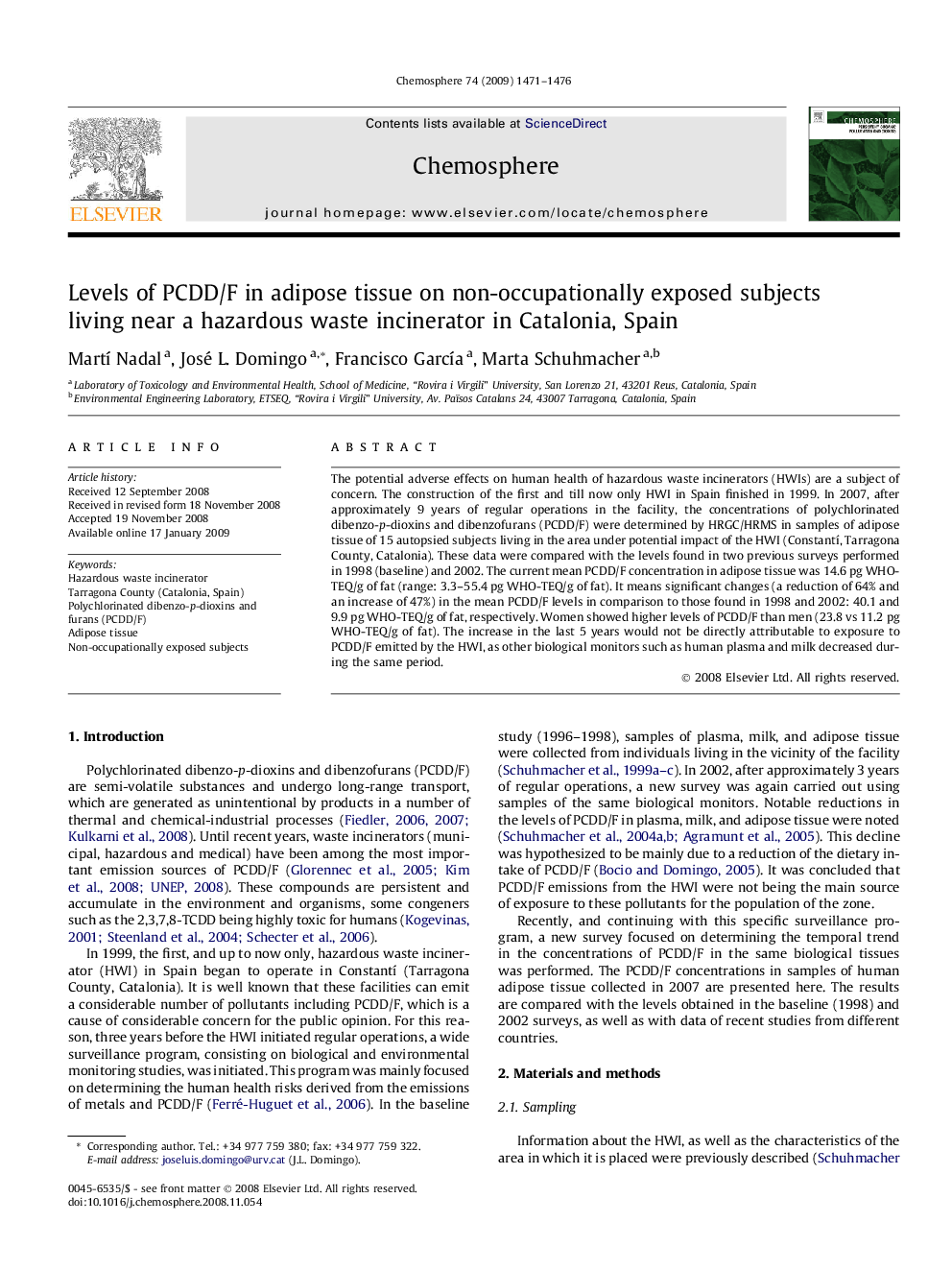| Article ID | Journal | Published Year | Pages | File Type |
|---|---|---|---|---|
| 4413631 | Chemosphere | 2009 | 6 Pages |
The potential adverse effects on human health of hazardous waste incinerators (HWIs) are a subject of concern. The construction of the first and till now only HWI in Spain finished in 1999. In 2007, after approximately 9 years of regular operations in the facility, the concentrations of polychlorinated dibenzo-p-dioxins and dibenzofurans (PCDD/F) were determined by HRGC/HRMS in samples of adipose tissue of 15 autopsied subjects living in the area under potential impact of the HWI (Constantí, Tarragona County, Catalonia). These data were compared with the levels found in two previous surveys performed in 1998 (baseline) and 2002. The current mean PCDD/F concentration in adipose tissue was 14.6 pg WHO-TEQ/g of fat (range: 3.3–55.4 pg WHO-TEQ/g of fat). It means significant changes (a reduction of 64% and an increase of 47%) in the mean PCDD/F levels in comparison to those found in 1998 and 2002: 40.1 and 9.9 pg WHO-TEQ/g of fat, respectively. Women showed higher levels of PCDD/F than men (23.8 vs 11.2 pg WHO-TEQ/g of fat). The increase in the last 5 years would not be directly attributable to exposure to PCDD/F emitted by the HWI, as other biological monitors such as human plasma and milk decreased during the same period.
